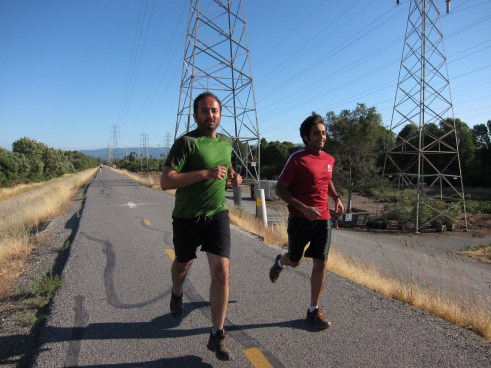Software engineers design and develop software applications or systems. They routinely troubleshoot and optimize code for efficiency.
Software engineering is a dynamic field where professionals craft the digital framework for various functionalities we encounter daily. From coding and debugging to collaborating with cross-functional teams, software engineers play a pivotal role in creating innovative tech solutions. Their responsibilities extend beyond mere code writing; they engage in thorough planning, complex problem-solving, and continuous learning to tackle the ever-changing landscape of technology.
Balancing technical acumen with teamwork, they regularly engage in peer code reviews, adapt to new programming tools, and ensure their output aligns with both user needs and business goals. By consistently testing and maintaining software to meet quality standards, software engineers ensure reliability and user satisfaction in the tech products we rely on.
Introduction To The Software Engineer’s Workspace
Understanding The Software Development Lifecycle
The Software Development Lifecycle (SDLC) is integral to the workspace rhythm. It dictates how engineers create, refine, and maintain software.- Planning: Define the software’s purpose.
- Designing: Sketch out the software’s architecture.
- Development: Write the code that makes the software work.
- Testing: Check software for errors and fix them.
- Deployment: Release the software to users.
- Maintenance: Update the software with improvements.
The Role Of A Software Engineer In A Team Environment
Software engineers often work closely with other team members. They share knowledge, solve problems, and achieve common goals.| Role | Responsibilities |
|---|---|
| Team Lead: | Makes decisions and guides the team. |
| Developer: | Writes and tests the code. |
| Quality Assurance: | Ensures the software meets standards. |
| DevOps Engineer: | Handles software release and system management. |
Daily Routines And Responsibilities
Starting The Day: Stand-ups And Check-ins
Every morning begins with a ritual for software engineers: stand-ups and check-ins. Team members gather to share progress, align goals, and tackle obstacles.- Review tasks: Peek at what’s on the agenda.
- Set priorities: Decide what to address first.
- Update the team: Share updates with colleagues.
- Sync on issues: Discuss and resolve blockages.
Core Development Activities: Coding And Debugging
After the morning meet, engineers dive into coding. They craft algorithms and build features.| Activity | Details |
|---|---|
| Writing Code | Engineers develop new software, using various programming languages. |
| Refactoring | Making the codebase cleaner and more efficient is a daily task. |
| Code Reviews | Peers check each other’s code to ensure quality and share knowledge. |
| Debugging | They troubleshoot and fix any issues to keep software running smoothly. |
Collaborative Efforts And Team Dynamics
Pair Programming And Code Reviews
Pair programming is when two engineers work on the same code. This helps catch mistakes early. One writes code. The other reviews that code on the spot. It is a great way to learn and teach. Code reviews are also key. Engineers check each other’s work here. They make sure the code is clean and works well. They use tools like GitHub to comment and suggest changes.| Activity | Benefits |
|---|---|
| Pair Programming | Faster bug detection, knowledge sharing |
| Code Reviews | Improved code quality, team standards |
Participating In Agile Ceremonies
Teams often use Agile methods. This means regular meetings. These are called ceremonies. They help the team stay on track.- Daily stand-ups: Quick status updates
- Sprint planning: Plan the next steps
- Retrospectives: Discuss what went well and what didn’t

Credit: www.iotinsider.com
Tool Proficiency And Usage
Essential Development Tools And Ides
Software engineers use a suite of tools daily. These help in writing, testing, and deploying code effortlessly. Integrated Development Environments (IDEs) are at the heart of coding. IDEs combine text editing, debugging, and build tools. They boost productivity and simplify complex tasks.- Visual Studio Code – favored for its versatility and support for multiple programming languages.
- Eclipse – widely used for Java, supports various other languages via plugins.
- PyCharm – preferred by Python developers for its intelligent code assistance.
- IntelliJ IDEA – known for powerful refactoring tools and smooth user experience.
Source Control And Version Management
Maintaining previous versions of code files is crucial. Engineers use version control systems to track changes, collaborate with peers and rollback to earlier code states if necessary. These tools are pivotal in coordinating teamwork across different features and fixes.| Tool | Usage |
|---|---|
| Git | For distributed version control, enabling branching and merging with ease. |
| GitHub | Offers code hosting with collaboration features, issue tracking, and CI/CD. |
| GitLab | Similar to GitHub but with integrated DevOps and project planning elements. |
| SVN | Centralized version control for large teams managing multiple projects. |
Problem-solving And Critical Thinking
Troubleshooting And Resolving Bugs
One of the core parts of a software engineer’s day involves troubleshooting. When software doesn’t work as expected, engineers must think critically to identify and solve issues. A standard process often involves:- Reviewing code to find errors
- Testing software to replicate issues
- Update code and verify the solution works
Implementing New Features And Enhancements
Besides fixing bugs, software engineers also add new features. They must think ahead about how new code fits into current systems. This process includes:- Brainstorming sessions for feature ideas
- Crafting code for new functionality
- Testing new code to ensure it integrates well
- Reviewing the work with peers
- Launching the feature for user feedback
Design And Architecture
Contributing To Software Design Discussions
Design discussions are not just talks. They shape the future.- Brainstorm ideas: Engineers throw their innovative thoughts into the ring.
- Analyze requirements: They turn client needs into technical specifications.
- Create prototypes: Quick models show if ideas work in the real world.
- Gather feedback: Opinions from peers refine the direction.
- Iterate designs: The group polishes ideas until they shine.
Maintaining And Improving Codebase Architecture
Software is a living entity, always evolving. Maintenance and improving code structure are perpetual tasks.| Action | Impact |
|---|---|
| Refactor code | Makes it cleaner and more understandable. |
| Optimize performance | Speeds up processes and enhances user experience. |
| Update documentation | Keeps records current for better collaboration. |
| Resolve technical debt | Prevents future issues and eases updates. |
| Review peers’ code | Ensures quality and builds team knowledge. |
Quality Assurance And Testing
Writing And Maintaining Unit Tests
Unit testing is a key part of a software engineer’s day. It involves checking small pieces of code, called units, for correctness. Engineers write tests for new features and maintain existing ones to ensure ongoing software health. This process catches problems early, saving time and effort.- Create test cases for all new code.
- Review test results for passes and fails.
- Update tests when code changes.
Collaboration With Qa Teams For Integration Testing
Working together with QA teams is crucial for integration testing. Here, software engineers and QA professionals unite to test how different parts of the system work together.- Meet with QA to discuss testing needs.
- Share code updates with QA teams.
- Address issues QA teams discover.
Continuous Learning And Skills Upgradation
Researching New Technologies And Techniques
A software engineer’s toolbelt is always expanding. Part of their day involves researching new technologies. They scour through:- Tech blogs
- Online forums
- Academic journals
- Documentation
Engaging In Peer Learning And Knowledge Sharing
Sharing knowledge is key. Software engineers often:- Conduct code reviews
- Participate in pair programming
- Join team meetings
Client And Stakeholder Interaction
Client and Stakeholder Interaction is a critical element of a software engineer’s job. It’s not just about writing code. Software engineers work closely with clients and stakeholders. They make sure the final product meets needs and expectations. This often means regular communication. Let’s dive into what this looks like on a daily basis.
Attending Meetings With Product Managers
Software engineers often start their day with meetings. They sit down with product managers. They discuss project progress. They align on the day’s goals. In these meetings, they talk about:- Timelines for upcoming features
- Technical challenges they might face
- Solutions to problems from previous days
Gathering Feedback And Requirements From End-users
Understanding what users need is key. Software engineers meet with end-users. They ask questions. They take notes. These interactions help them:- Find out what end-users love about the software
- Learn about features that could be improved
- Gather thoughts on new functionalities

Credit: www.businessinsider.com
Work-life Balance And Productivity
Time Management And Avoiding Burnout
Time management is the secret sauce to productivity for software engineers. It involves prioritizing tasks and setting realistic goals.- Use Pomodoro Technique: Work for 25 minutes, then take a 5-minute break.
- Time Blocking: Assign blocks of time to specific tasks or projects.
Incorporating Downtime And Creative Breaks
Downtime is not wasted time. It provides a chance to reset and come back to challenges with fresh eyes.- Physical activities: Exercise or yoga to rejuvenate the body.
- Creative hobbies: Play music, draw, or engage in woodworking.
- Quiet reflection: Read a book or meditate to clear the mind.

Credit: engineering.linkedin.com
Frequently Asked Questions Of What Software Engineers Do On A Daily Basis
What Tasks Do Software Engineers Perform Daily?
Software engineers typically engage in coding, debugging, attending meetings, collaborating on design and architecture, conducting code reviews, and writing documentation.
How Do Software Engineers Manage Their Workflow?
They often use version control systems, track tasks using project management tools, and perform iterative testing to manage their workflow efficiently.
Do Software Engineers Work With Teams?
Yes, software engineers frequently collaborate with other developers, product managers, UX/UI designers, and stakeholders within cross-functional teams.
What Programming Languages Do Software Engineers Use?
Software engineers use a variety of programming languages depending on the project requirements, including Java, Python, C++, and JavaScript among others.
How Often Do Software Engineers Learn New Skills?
Software engineers are in a field that requires continual learning to keep up with new technologies, programming languages, and industry best practices.
What Role Does Problem-solving Play In Engineering?
Problem-solving is central to a software engineer’s role, involving diagnosing issues, crafting solutions, and optimizing systems for better performance and functionality.
Conclusion
Navigating the intricacies of software engineering takes skill and dedication. Daily tasks vary, depending on the project at hand. Engineers continually adapt to new technologies, work collaboratively, and solve complex problems. This sector thrives on innovation and persistence. Understanding these routines is key for aspiring developers.
Let’s embrace the code of progress together.










